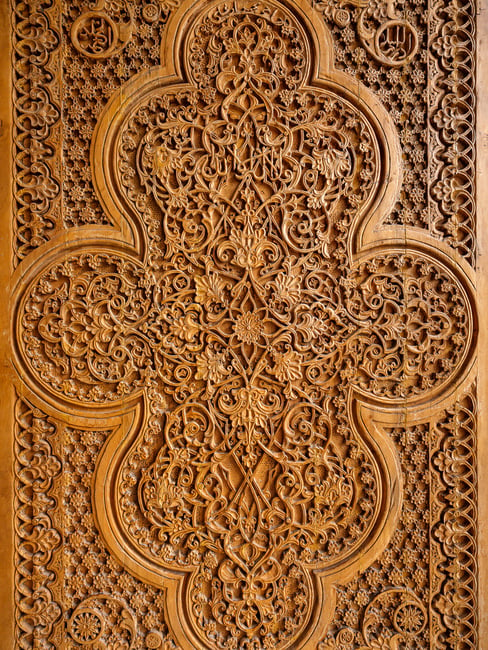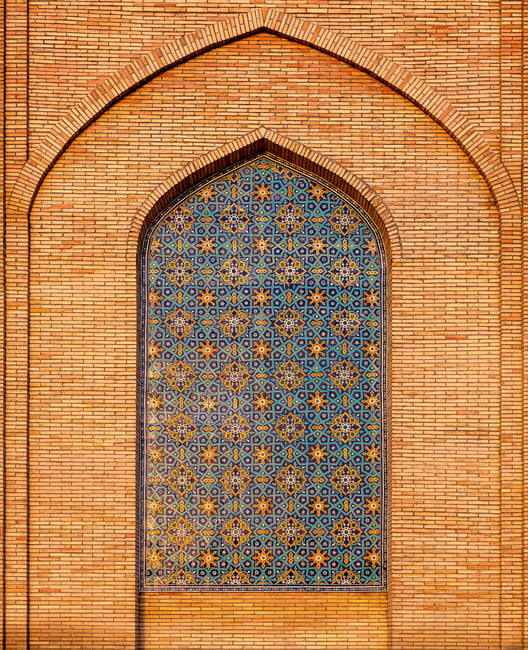Earlier this year, I had a chance to travel and photograph my home country of Uzbekistan for three weeks, as part of a photography job for the State Committee of the Republic of Uzbekistan for Tourism Development (basically, the Ministry of Tourism). It was a surreal experience for me personally, because I had not seen my country for 17 years, and I had practically never seen anything other than my home town and the capital Tashkent. As a photographer, I have been fortunate to have visited so many countries, and yet there I was, looking like a tourist in the very country where I was born and raised…

GFX 50S + GF32-64mmF4 R LM WR @ 32mm, ISO 100, 6/1, f/11.0
Ever since the new president of Uzbekistan got elected, the country went through swift transformations. The borders were finally opened up after 25 years of isolation from the world. With visa-free entry for many developed countries and an online eVisa system for everyone else, tourists from all over the world have been flocking to see this unique country that very few know even exists.
My specific job was to drive through all the regions and create imagery for the ministry of tourism, so that they can use high-resolution versions of my photos to promote the country both internally and externally. So it was obviously a big responsibility, something I acknowledged and understood fully before accepting the job.

GFX 50R + GF110mmF2 R LM WR @ 110mm, ISO 640, 1/500, f/5.6
The images presented in this article have been hand-picked from this trip. Without further ado, let’s get started!
Safety and Security
The first issue I have to get out of the way has to do with safety and security while visiting Uzbekistan. Since Central Asia is a very unfamiliar territory for many, there may be concerns with the overall stability of the region. With countries like Afghanistan bordering the country, one might wonder how safe it is to visit Uzbekistan.

GFX 50S + GF23mmF4 R LM WR @ 23mm, ISO 800, 1/60, f/5.6
The US Department of State lists Uzbekistan as Level 1: Exercise Normal Precautions, which is basically the lowest level of safety concern for a country. Gallup’s 2018 Global Law and Order Report listed Uzbekistan as #5 safest country to visit in the world, putting it above countries like Switzerland and Canada in safety. Uzbekistan is also rated as one of the safest countries to visit for solo female travelers, which says a lot. Feel free to do some research on your own, but I can guarantee you that you will end up with similar conclusions.

GFX 50R + GF110mmF2 R LM WR @ 110mm, ISO 100, 1/6, f/8.0
Although Uzbekistan is a muslim-majority country, all religions and races are tolerated in the country. In fact, even today there are active churches and synagogues present in the country. There is no Sharia law, or anything even remotely close to it – religion has very little influence on state affairs and passed laws.

GFX 50S + GF110mmF2 R LM WR @ 110mm, ISO 100, 1/450, f/2.5
On top of that, the government of Uzbekistan pays close attention to its borders and keeps security tight at all times. Government police and military personnel control the borders, while special tourist police force guards all important landmarks. The locals are very friendly and welcoming. In short, Uzbekistan is one of the safest countries to visit for tourism purposes.

GFX 50R + GF250mmF4 R LM OIS WR @ 250mm, ISO 100, 1/400, f/8.0
Tashkent – The Capital
When flying to Uzbekistan, you will most likely be landing in its capital, Tashkent. With a population of over 2 million, Tashkent is the biggest city in not only Uzbekistan, but also all of Central Asia. It is a large and very clean city, offering quite a bit to see and experience for a traveling photographer. The highlights of Tashkent include: food, museums, metro stations, parks and mosques. While many travelers skip Tashkent and go directly to historic cities like Bukhara and Samarkand, I would highly recommend to start the journey in the capital and explore it for a couple of days.
There are many places worth checking out in Tashkent, but below is my personal list of the highlights.
Amir Timur Museum
When visiting many of the historic landmarks in Uzbekistan, you will be hearing the name “Timur” or “Tamerlane” quite a bit. As one of the greatest conquerors and military commanders in history, Timur left a big legacy to the world, creating an empire that stretched from Europe all the way to India. If you don’t know much about Timur and Uzbekistan, this museum is a good starting point. The Amir Timur Museum is fairly small and you can explore it all in about an hour, depending on how quick you go.
From photographic standpoint, you might find the circular shape of the building, along with its massive wood-carved doors and columns to be interesting to photograph:

Inside the museum, you will find Islamic art, various illustrations, maps and artifacts from different regions of the country. In the center of the building, you will find a huge stand with a replica of Uthman’s Quran, one of the oldest surviving Qurans written in Kufic script.

Why a replica? Because the original is too valuable from the Islamic standpoint to be stored in a museum. After its journey to Russia and back (the Quran was finally returned to Uzbekistan in 1924), it has been securely kept in the library of the Khast Imam Complex.
The Khast Imam Complex
To see the original version of Uthman’s Quran, you should check out the Khast Imam Complex, another must—visit location in the capital. The complex itself is quite beautiful, and you will be able to photograph its spectacular architecture, blue tiles, turquoise domes and tall minarets:

The blue tiles and the Quranic texts can be found on a number of different buildings here:

You will find a few architectural monuments, including a madrasah (Islamic school), a mosque and a mausoleum:

As you walk around the property, you will find beautifully hand-carved wooden doors, with inscriptions in Arabic, such as this one:

The property itself is quite beautiful and well-maintained:

And its brick walls provide a nice texture to photograph local kids, who come to the complex to play and fly their kites on windy days:

The complex is a great spot to photograph at sunset. Beautiful golden light illuminates the bricks and the tiles of the walls, providing good photographic opportunities:

The library where Uthman’s Quran is stored can get quite busy during the day, so make sure to check it out before sunset, since it closes fairly early.
The Museum of Victims of Repressions
The Museum of Victims of Repressions is a reminder of some of the sad history of political repressions that took place in Uzbekistan during the Soviet era. The main memorial site is interesting to see, although I personally did not find it all that appealing for photography:

Still, the park is quite beautiful and serene. If you are going to come here, make sure to take a guide with you who can translate.
If you get hungry, right across from the museum you will find the popular TV tower, along with the famous “Osh Center”, where they make a traditional Uzbek dish called “Osh”:

Make sure to taste Osh in all the different regions of Uzbekistan, since it tastes different everywhere.
Ugam-Chatkal National Park
If you want to explore nature and photograph some of the most beautiful mountain regions of Uzbekistan, the Ugam-Chatkal National Park is the place to go. It is about a two hour drive from Tashkent to the entrance, but you have to hire a local driver with a 4×4 SUV who can drive you into the most beautiful areas of the park. Unfortunately, the park is not easy to get into, and you must show your passport to get a permit to enter the park.
On the way to Ugam-Chatkal, you will have a chance to stop and photograph the beautiful nature that surrounds the park:

I was there in March and I had a chance to witness the blossoming of all the fruit trees along the way:

The park has many beautiful mountains, which have quite a bit of snow on them until late spring:

In the heart of the park, very close to the border with Kazakhstan, you will find two beautiful, jade-colored lakes – the upper and the lower Urunghach lakes. These will require some hiking to get to, but are absolutely worth seeing:

Take the time to explore the park and do some hiking, as there is plenty of stuff to see. There are a few other lakes in the park, but I did not have a chance to explore them during my visit.
Tashkent Metro
The Tashkent Metro is one of the most beautiful underground subways in the world. Designed in the Soviet era and launched in 1977, it offers different themes at each station (and there are 29 of them). Take your time to explore the subway – I recommend getting off at each station to see what it has to offer. For many years, the Tashkent subway was closely monitored and no photography was allowed, since it was also built as a bomb shelter in case of a nuclear strike. Today, the subway is open to visit freely by anyone and photography / videography of any kind is allowed (yes, even when shooting with a tripod). Some of the stations were never changed after the collapse of the Soviet Union, such as the “Cosmonauts” station:

The wall art is truly spectacular in this station. You will find a number of portraits of famous cosmonauts, such as Yuriy Gagarin and Valentina Tereshkova:

GFX 50S + GF32-64mmF4 R LM WR @ 32mm, ISO 100, 3.5 sec, f/8.0
The station itself is beautifully decorated with colorful walls, columns and marble floors:

Don’t forget to experiment with slow shutter speeds:

The subway sometimes gets busy, but it never gets really crowded. If you practice some patience, you will be able to photograph stations with very few people.
The Alisher Navoi subway station takes its name from a great poet and writer from the 15th century, and offers beautiful wall art based on his works:

While the Pahtakor station offers beautiful mosaic art with blue, green, yellow and white colors:

The Independence Square station has stunning columns, glass chandeliers and ceiling art:

Like I said, take your time and explore each station. My recommendation is to run each line from end to end. Along the way, you will also be able to photograph the locals, who are very friendly and don’t mind having their picture taken!

Table of Contents